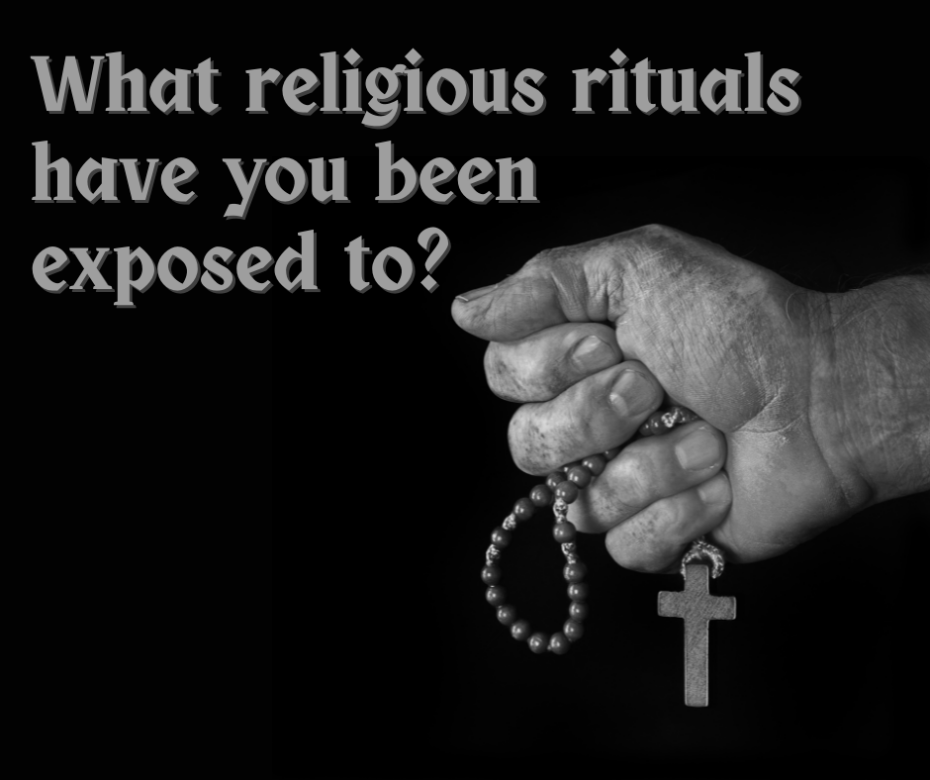Throughout church history, people have been duped into believing that they could receive wonderful spiritual benefits from religious rituals. Churches have promised the forgiveness of sins and eternal salvation if people submit to baptism, take communion, or join their ranks. Of course, to keep those blessings, the folks must continue in the teachings of the particular group that offers these benefits.
Long before the birth of the Church, the Jews, through circumcision, offered worshipers, a covenant relationship with God and entrance into His kingdom. In the Middle Ages, the Roman church was in the business of selling the bones of dead saints with the promise that buyers would obtain release from suffering after death (purgatory).
Judaism, and other religions as well, promised adherents forgiveness through the blood of sacrificial animals. Many faiths have claimed that their followers can obtain certain spiritual benefits from making pilgrimages to religious sites.
Recently, I was looking at Luke 5:12-15, which records the Lord healing a man who was “full” of leprosy. As many have pointed out, in the Bible, leprosy is a picture of sin. The healing of leprosy was very rare in the Bible. Only God could do it. Until Jesus came to the Nation of Israel, nobody living during the days of the NT had seen anybody cured of this disease. This man would have been a pitiful sight. Not only was he dying from a horrible, disfiguring malady, but he was also a religious outcast who lived his life on the outskirts of society. He could not worship in the temple in Jerusalem. He was considered unclean, both physically and religiously. He would have been considered cursed by God.
But this man had heard about the teachings of Christ and the miracles He had performed and knows that He had the power to cure him of his suffering. Though he could not so much as approach the temple to look for relief, he boldly comes into the presence of the King and says to Him, “Lord, if you are willing, you can make me clean” (Luke 5:12).
We know what happened. With what is a single word in the Greek, Jesus told the man to be cleansed. Immediately, he was healed of his leprosy.
If leprosy was a picture of sin, the Lord’s action is a picture of this man receiving the forgiveness of sins, like the paralytic in Mark 2:5. I take this man to be a believer. He had believed that Jesus was the Christ when he had heard about the things He had taught. Because he believed Jesus was the Christ, he knew He could heal him of his disease.
This man is a beautiful picture. The believer not only receives eternal life by faith in Christ, but the Lord also forgives believers of their sin. With that forgiveness, they can have fellowship with the Lord.
The rituals in the temple in Jerusalem–even with all its baptisms and sacrifices–could provide neither of those things to this man. In fact, the man was not even allowed to participate in temple rituals. Now, the Lord tells the man to go show himself to the priests at the temple. There he was to do what Moses commanded anybody healed of leprosy to do (Luke 5:14).
Moses said that the man healed of leprosy was to offer a number of sacrifices, shave his head, go through ritual washings, and apply blood to various parts of his body (Leviticus 14). This process would take eight days and would signify that the man had been cleansed. He would then be welcomed back into the religious community.
Jesus said that this man would be a “witness to” the priests and religious leaders in Jerusalem, the capital and religious center of Israel. The cured leper would be irrefutable evidence that Jesus had been sent from God.
The priests, with all their sacrifices in the temple, could not cleanse this man. They could only declare that he had been cleansed. But who had actually cleansed him? Jesus of Nazareth. After the eight days, they were to bear witness to the One who could do what their rituals could not.
Of course, they did not do that. They would later say that Jesus did the miracles He did through the power of Satan. But the facts remain.
Religious practices, in whatever form they take, can never give eternal life, nor can they bring the forgiveness of sins. If a person wants either, there is only one place to go.
The man full of leprosy knew the One Who could do both.


